#orange shirt day
Text
It's Orange Shirt Day in Canada! Here are some ways you can support survivors of residential schools today:
Learn about the harm done by residential schools, and the calls for justice (links contain discussions of child death and abuse)
Call your elected representatives and show up to city council meetings. Speak up in support of indigenous activists' causes.
Follow indigenous journalists and activists online.
Donate to organizations that help survivors:
The Indian Residential School Survivors Society offers counseling and other supports (24 hour crisis hotline: 1-(800)-721-0066)
The KUU-US Crisis Line Society (for adults: 250-723-4050; for minors: 250-723-2040)
The First Nations Child and Family Caring Society
(Feel free to add more!)
928 notes
·
View notes
Text

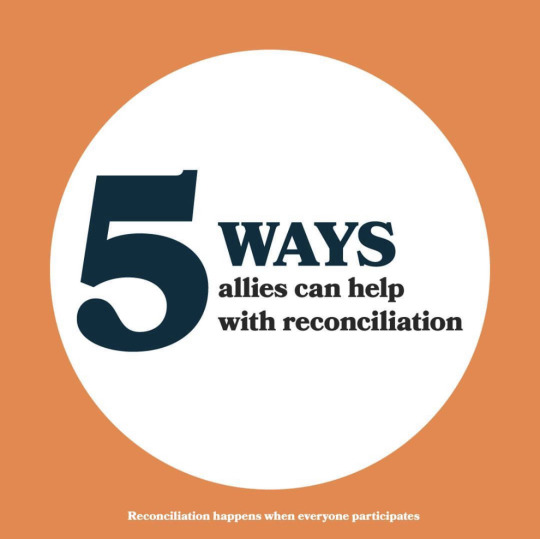
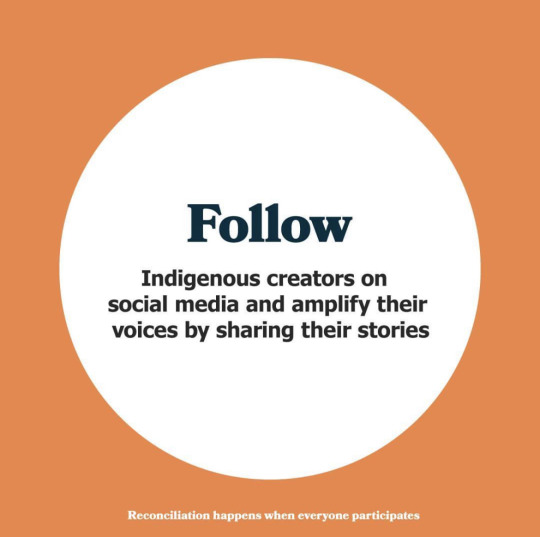
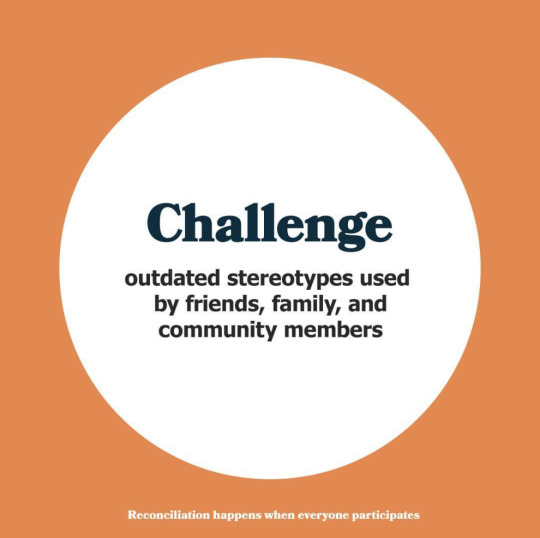

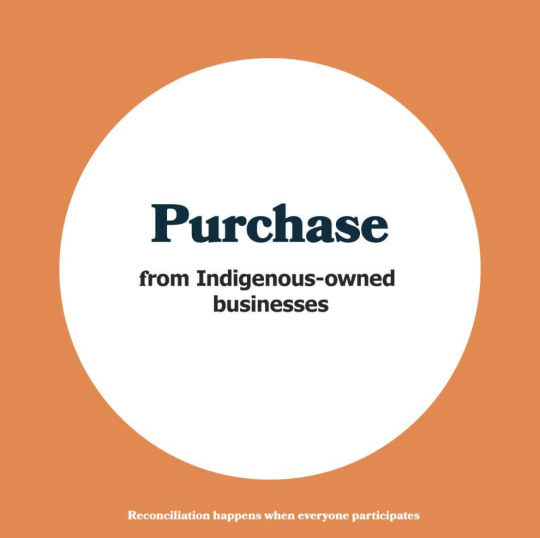

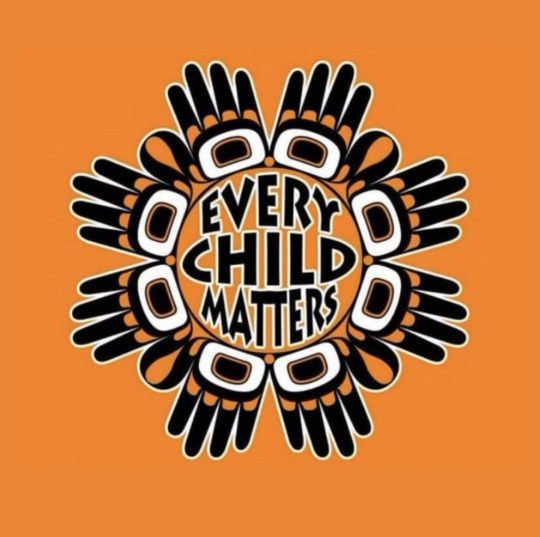
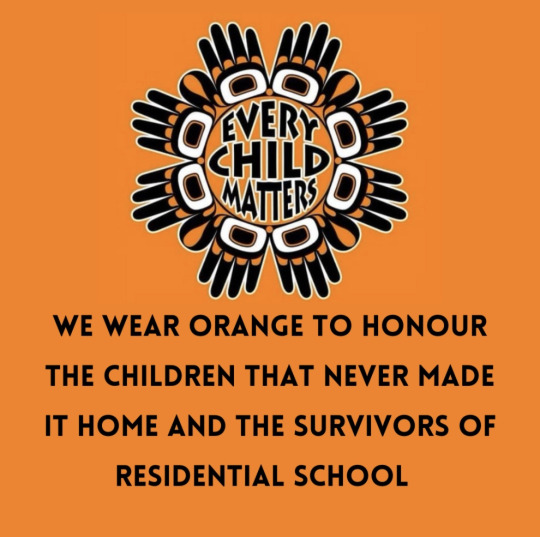
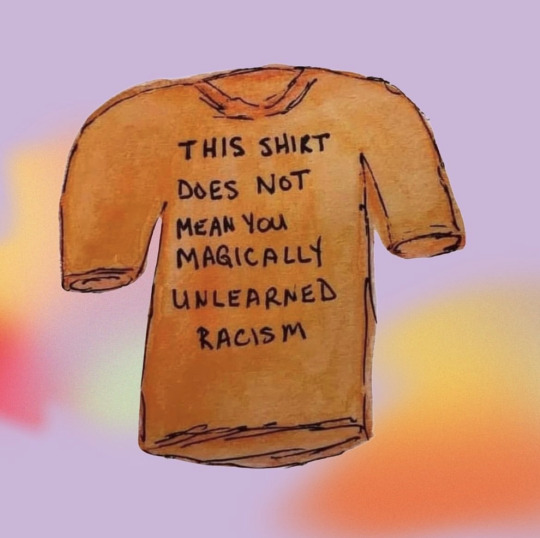
Orange shirt day tomorrow. Once again, I’m of mixed feelings. Happy that we have a day that let’s non-Indigenous people know.., but sad we even have to make a day to be noticed or cared about.
Trying to spread awareness and love.
🧡🧡🧡🧡🧡🧡🧡🧡🧡🧡🧡🧡🧡🧡🧡🧡🧡🧡🧡🧡🧡🧡🧡🧡🧡🧡🧡🧡🧡🧡🧡🧡🧡🧡🧡🧡🧡🧡🧡🧡🧡🧡🧡🧡🧡🧡🧡🧡🧡🧡🧡🧡🧡🧡🧡🧡🧡🧡🧡🧡🧡🧡🧡🧡🧡🧡🧡🧡🧡🧡🧡🧡
#personal#every child matters#truth and reconciliation#residential schools#orange shirt day#canada#Canada shame#indigenous#Indigenous resilience#we are still here#indigenous resistance#september#september 30
3K notes
·
View notes
Text
content warning: residential schools //
as Orange Shirt Day / The National Day of Truth and Reconciliation nears [September 30] I want to give a bit of context to those internationally who might not know that this day is.
Orange Shirt Day was started by Phyllis Webstad and others in 2013. This is a day to reflect and promote reconciliation, as well as uplift and support the victims and communities impacted by the Canadian residential school system. This is also the origin of the Every Child Matters movement.
The National Day of Truth and Reconciliation, as it's known by the Canadian government, was only formed as an official national day in 2021 after 200 unmarked graves were discovered on the property of the former Kamloops indian residential school that same year. Currently there are estimated thousands of graves on residential school properties; many of which have not been properly addressed.
Kivalliq Hall was the last residential school in Canada and closed in 1997. This is not some far-off distant history thing, many people alive today were sent to residential schools as children.
If you want to give support, consider donating to the Indian Residential Schools Survivor Society, or Orange Shirt Day. The IRSSS does fantastic work, offering counselling and numerous support lines - including one for 24/7 crisis support. I'd also like to mention Reconciliation Canada, as they also do good work.
This is a small personal anecdote here, but I'd like to recommend checking out Indian Horse; a novel by the late Richard Wagamese that follows the life of a boy going through the residential school system. There is also a film adaptation by the same name. This book [and its film] offers valuable education on the dark history that is residential schools.
I'm always happy to have additional links and educational material added to my posts, so please do not hesitate to add onto this. thank you.
418 notes
·
View notes
Text
- september 30th, national day for truth and reconciliation -
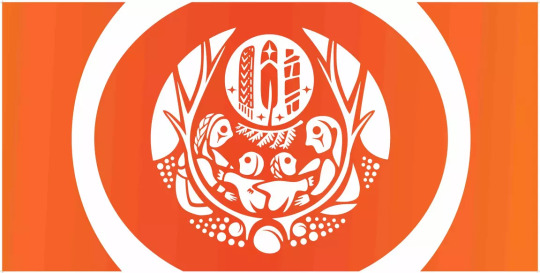



Survivors experienced horrific atrocities while prisoners in these institutions. It is important that this image show the love and strength that colonialism tried to steal from us. Despite genocide, we are still here – still fighting for justice and restitution, as true Warriors. - Dorene Bernard, Mi’kmaq Survivor who attended Shubenacadie Residential School
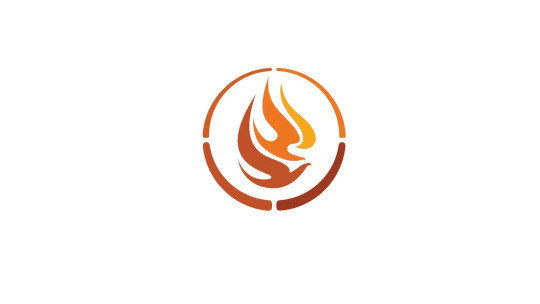
#chromatic voice#national day for truth and reconciliation#first nations#inuit#metis#missing and murdered indigenous women#mmiwcanada#residential schools#indigenous#turtle island#unceded land#survivor testimony#orange shirt day
317 notes
·
View notes
Text
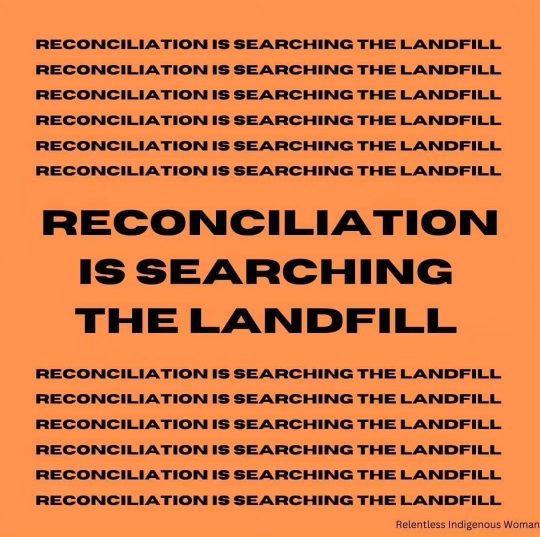
relentless_indig_woman
[IMAGE ID: an orange background with black text reading 'Reconciliation is searching the landfill' written repeatedly. IMAGE ID END]
*if you like this post instead of reblogging, I will block you. this is about indigenous women's lives and not just a fun post to put in your likes*
#reblog this don't just like#mmiwg2s#truth and reconciliation#ndn#reconciliation is dead#first nations#indigenous#canada#orange shirt day
133 notes
·
View notes
Text
september 30th, 2023
People who are not First Nations, Métis, or Inuit will never know the sickening feeling of finding out the playground you used to go to is the site of a former residential school, a school still in use by the town of Fort Smith, NWT.

fig. 1. Joseph Burr Tyrrell Elementary School in Fort Smith. Sarah Pruys/Cabin Radio.
First, I’d like to make clear that to my knowledge none of my my immediate family members are residential school survivors, I share community and space with many people who are and I personally attended the Truth and Reconciliation Commission and I will only be speaking on my own experiences. I descend from 7 historic Métis Otipemisiwak families by the names of Berthelet, Caron, St. Germain, Larivière, Dazé, Dubois, and Boudreau, who come from the historic Red River Settlement and Batoche. I come from Amiskwaciywâskahikan, Treaty 6 and I now make my home in Mohkinstsis on Treaty 7 land. I introduce myself in this traditional way of the Métis Otipemisiwak to contextualize my knowledge and experiences, honour my family, and situate myself on this land and in this conversation.
Today is Orange Shirt Day, a day that honours Phyllis Webstad, member of Stswecem’c Xgat’tem First Nation (Canoe Creek Indian Band), and survivor of the Residential School system. Her story is what has inspired this national day of honour and action. Beyond wearing orange I would like non-Indigenous settlers to really consider the history around them and the experiences of survivors and those who lost their lives. I would like you to physically step up for us, be there for us when we are being beaten down, sit with Elders and listen to their stories, learn about their joy as well their pain.
I attended Grandin School, an elementary school in Amiskwaciywâskahikan (Edmonton, Alberta) before it was renamed to Holy Child. For anyone outside of the area I will describe it; the school is over one hundred years old in a historic neighbourhood. Near the school is an LRT station underground and on one side of the platform was a large mural depicting Bishop Grandin, a nun holding a native child, an Indigenous family at camp, and a residential school. Based on the fact that Bishop Grandin spent time working in Saint-Boniface of the Red River Settlement, Fort Chipewyan in what is now Alberta, and Île-à-la-Crosse in what is now Saskatchewan, it can be assumed that the family is either First Nations or Métis, however it must not be forgotten that the Inuit of the north also suffered these institutions.
A quote from Bishop Vital Grandin haunts me to this day, more now than ever.
“We instil in them a pronounced distaste for the native life so that they will be humiliated when reminded of their origin. When they graduate from our institutions, the children have lost everything Native except their blood.”
- Bishop Vital Grandin, 1875
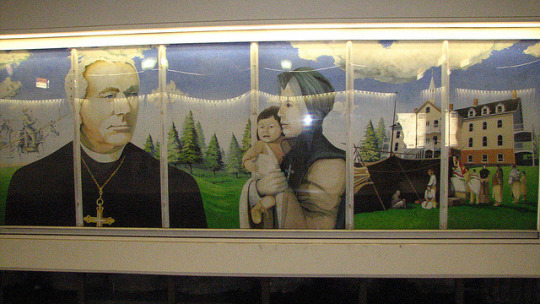
Fig. 2. “A mural depicting Bishop Grandin at an Indian Residential School is located at the Grandin LRT Station in Edmonton.” Image courtesy of Jake Cardinal and Alberta Native News.
I remember teachers taking us to the Is platform to sse the murals but it was not a critical conversation they were very much pro church and viewed residential schools from a sinister paternalistic perspective.
The mural was eventually covered up but the narrative in grandin elementary was that they were "helping native families. I remember inside the school by the main stairwell there was a portrait of Old Grandin and it was literally so scary to me hated walking past it so much I would sprint up the stairs whenever I walked past him alone.
I attended the seventh and final Truth and Reconciliation Commission’s national event in March of 2014, at the end of one of the days I was there I took the train to see my old elementary school, to see the mural and to really consider what I had been taught in school versus what my community and family has taught me. Again, none of my direct family are residential school survivors but many Métis are and this history is often hidden. Prayers up and tobacco down for every single survivors, living and in spirit form.
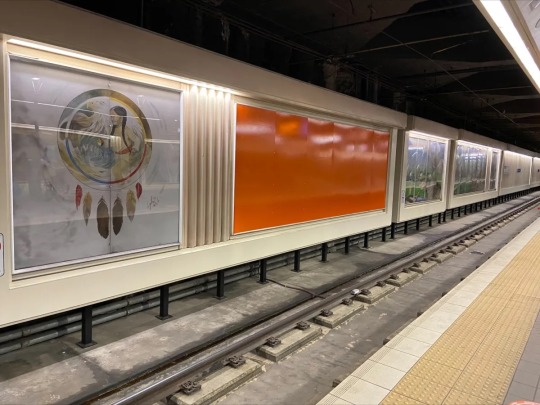
Fig. 3. The mural depicting Bishop Vital-Justin Grandin at an Edmonton LRT Station was covered in orange Tuesday, June 8, 2021. Kirby Bourne, Global News
First Nations, Métis, and Inuit have been talking about their family members who did not come home and the abuse they experienced. This is not new information, and you have to sit and listen no matter how uncomfortable you are because nothing is more uncomfortable than colonial violence. When news came out about the children of Kamloops in 2021 it was devastating how many people I knew personally that were completely ignorant of the Truth and Reconciliation Commission and the history of residential schools. What happened in these institutions are absolute atrocities many people would rather not face even the knowledge of what happened to these children, both alive and passed on. Like the survivors, the perpetrators of these horrors live on and have never been held accountable.
Continue to honour your community, stand up and show up for First Nations, Métis, and Inuit. Learn about the history of settler-colonial occupation of this land and how you yourself are directly benefitting from this ongoing genocide. Residential school survivors and the children who never came home are in your community; they are the kind kokum down the hall as well as the middle aged man living on the street, their children young adults, teenagers, kids, babies, they still carry these experiences and memory down to the atoms that make up each of their cells.
works cited
Bourne, Kirby. ‘Mural at old Grandin LRT Station to be removed this fall,’ September 23rd, 2021, Global News.
Cardinal, Jake. ‘Edmonton Paints Over The Grandin Mural’, Alberta Native News, June 10th, 2021.
Grandin, Vital-Justin. On the goal of residential schools, 1875.
Pruys, Sarah. ‘MLA calls for new Fort Smith schools, citing residential school legacy’. Cabin Radio, March 5th, 2023.
Webstad, Phyllis Jack. Phyllis’ Story In Her Own Words, OrangeShirtDay.Org
#my heart is there for all survivors and families that lost their babies#truly heartbreaking stuff#truth and reconciliation#orange shirt day#riel text#Indigenous#heavy day
113 notes
·
View notes
Text

In honour of the lost lives and innocence taken too soon.
#cnanada#united states#indigenous#first nations#orange shirt day#truth and reconciliation#national day of truth and reconciliation#justice#residential schools
127 notes
·
View notes
Text
A bill to make Orange Shirt Day a statutory holiday in Manitoba has passed its final vote in the legislature.
The bill will ensure that workers under provincial jurisdiction get every Sept. 30 off, or holiday pay if they work.
The day, also known as the National Day for Truth and Reconciliation, commemorates Indigenous children who attended residential schools.
Continue Reading
Tagging @politicsofcanada
#cdnpoli#canada#canadian politics#canadian news#manitoba#orange shirt day#truth and reconciliation#first nations#indigenous#residential schools
89 notes
·
View notes
Text
National Day of Truth and Reconciliation in Canada - first observed as a federal holiday in 2021. The orange shirt symbolizes how the residential school system took away the indigenous identities (and in many cases lives) of its students, and refers to the shirt stripped from residential school survivor Phyllis Jack Webstad.
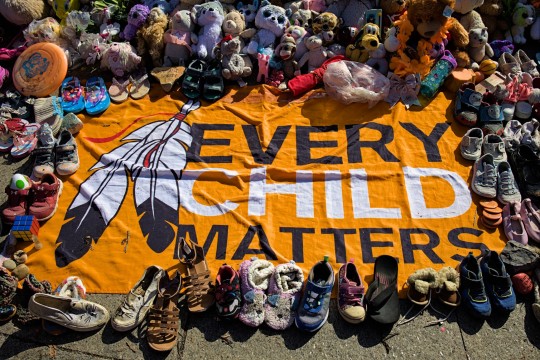
467 notes
·
View notes
Text
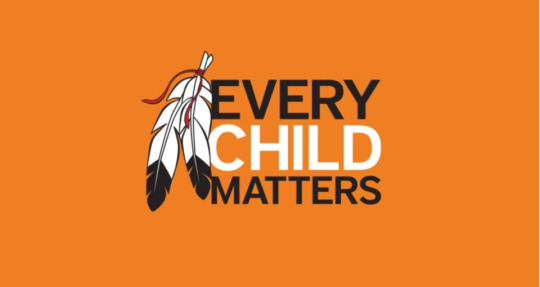
We remember those that never came home and honour those that survived.
#truth and reconciliation#national day of truth and reconciliation#orange shirt day#every child matters#indigenous#Canada#cultural genocide
73 notes
·
View notes
Text
I love you cedar and tobacco smoke
I love you feather fan and jingle dress
I love you wood flute and beading
I love you fry bread and jewel corn
I love you ribbon skirt and shawl
I love you drum and electric powwow
I love you ancestors
I love you descendants
Sgi sgi sgi nigvda
Gvgeyui
Thank you thank you thank you everyone
I love you
66 notes
·
View notes
Text
Not so subtle reminder to my followers, especially those in Canada ect, if you don't know about the mass cultural genocide of indigenous people within Canada & The US.
On September 30th, it's national Truth and Reconciliation day in Canada. Which is a honestly our government's bullshit way of getting away with not really acknowledging or doing anything to actually reconcile with their murder of children.
As a mixed Native, I'm honestly sick of seeing the lack of care I see on social media and in society for indigenous people. I'm over it. I'm tired. My heart bleeds and aches when I think about how many children never made it home and how many Missing and Murdered indigenous women, girls and 2spirit people there are.
I want allies to step it the fuck up. Where is the same outrage, where is the fire, where is the passion you have, especially looking at you white allies, for everyone else?
Land Back. Real truth and reconciliation. Listen to indigenous people.
Here are some starting points.
86 notes
·
View notes
Text
Every Child Matters

I try to share a similar post each year with the purpose of educating those who may not know about Canadian & American indigenous peoples and the struggles we have gone through generationally. But honestly, this year I am pissed off so my tone in some areas may read as such. I will not apologize for that.
I am angry that so many people don't know (not your fault, it's the media's fault and their lack of coverage up until recent years). I am angry at both countries' leaders for doing the bare minimum for many years. And I am angry that so much of my ancestor's history was removed and altered from the truth for centuries.
However, I am glad that with each passing year, more people are learning, and I truly appreciate those who care enough to show their support.
With that said, please mark your calendars and wear orange on September 30th! This is your official reminder! Please continue reading and consider sharing this post so more people are aware 🧡

September 30th is known as Orange Shirt Day, the National Day for Truth and Reconciliation, across Canada and North America in remembrance of those who suffered in US/Canadian Indian Residential Schools. We recognize the harm done to generations of children by the Indian Residential Schools and share our collective histories as an affirmation of our commitment to ensure that Every Child Matters!
Remembering the 150,000+ Indigenous children who endured physical, mental, and sexual abuse at these residential schools; trauma that continues to be felt to this very day by survivors and their families.
Children were stolen around this time of year to attend these ‘schools’. Parents who fought to keep their kids would often be arrested and/or beaten, it was nearly impossible for them to keep their children once the police and school officials showed up to take them. And even once the school season was over, they were not returned to their families.
We knew many children had likely suffered and died from the abuse, but could have never guessed the atrocious number of remains that we are now finding.

As of May 2022, The remains of over 6,000 children have been recovered from unmarked graves at the locations of these former residential schools within Canada, and 500 have been discovered at 19 schools in the US. However, the Interior Department said that number could climb to the thousands or even tens of thousands.
For reference to help you digest how large the numbers will become when all schools have been properly investigated, there were approximately 139 schools in Canada and so far only (as of May 2022) 36 investigations have been completed in Canada. The US has identified more than 400 schools that were highly supported by the U.S. government during their operations, and more than 50 associated burial sites, a figure that could grow exponentially as research continues.
This wasn’t as long ago as you might think. The last residential school in Canada closed in 1998, only twenty-five years ago. As of 2020, 7 off-reservation boarding schools continue to be federally funded.
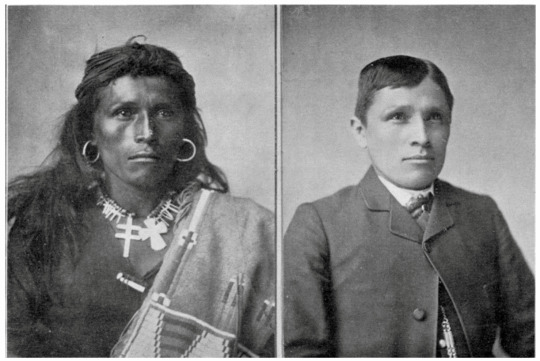
“Kill the Indian, Save the man” was a common phrase in these schools. Being Indians was savage, but we were ‘savable’ in the eyes of their Christian / Catholic God if we were stripped of the things that made us indigenous.
I am lucky enough to know survivors. I am alive because of survivors.
Survivors taught us younger generations about the horrors they dealt with in residential schools. Beaten, tortured, murdered. Watching other children die from diseases grown in their unclean living situations. ‘Forgetting’ what tribe a child is from and giving them to another reservation to care for until the following year when they’d be taken away again. Raped girls who survived traumatic births at a young age only for their babies to be thrown in the furnace. Sterilizing boys and girls so that if they were released they couldn’t create any more ‘indians’.
These children were ripped from their homes, watched their parents die if they fought to keep their children, were forced to cut their hair (our hair is as sacred as our traditional clothing), and beaten if caught speaking in their native languages. As a 'reward' for good behavior in school, certain children were sent away to live with white families as slaves to 'learn the white way' during long breaks between school periods.
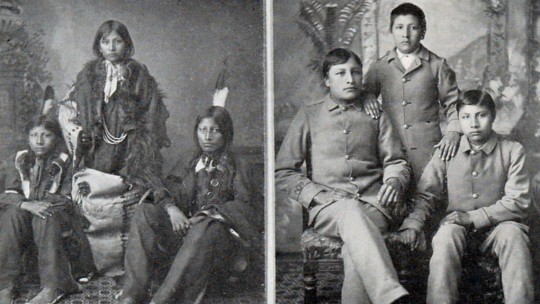
Keep the families of those who lost loved ones who never returned and the survivors who lived through unimaginable trauma in your hearts. On September 30th wear orange. Join a protest. Support indigenous peoples every day, but especially on September 30th (National Day for Truth and Reconciliation), June 21st (Canadian National Indigenous Peoples Day), and October 8th (American Indigenous Peoples Day). Share our stories. Educate yourself on our history, not the false history written in books by white men, churches, and governments that supported and endorsed these institutions.
Because Every Child Matters.

Resources where you can learn more:
Orange Shirt Society
CBC News - scroll to find the map
NPR
CBS News
CNN News
The Indigenous Foundation
#every child matters#🧡🧡🧡#orange shirt day#september 30th#national day for truth and reconciliation#support indigenous peoples#support first nations#support native americans#bring them home#protect native rights#protect native land#important#boost#native americans#indigenous
67 notes
·
View notes
Text
Honouring Truth and Reconciliation Day: Remembering the Importance of Orange Shirt Day
Shaina Tranquilino
September 30, 2023

In recent years, there has been a growing recognition of the importance of truth and reconciliation in acknowledging and healing the wounds caused by historical injustices. Canada's Truth and Reconciliation Day, recognized on September 30th annually, serves as a crucial reminder that understanding our past is essential for building a more inclusive and harmonious future. In conjunction with this day, Orange Shirt Day stands as a poignant symbol of remembrance and reflection concerning the devastating impacts of residential schools. This blog post aims to shed light on both events' significance and highlight why they deserve our attention.
1. Understanding Truth and Reconciliation:
Truth and Reconciliation Day holds immense value as it acknowledges the painful history experienced by Indigenous peoples in Canada due to colonization policies such as the Indian Residential Schools system. The objective is not only to remember but also to foster an environment where dialogue, empathy, and understanding can flourish between Indigenous communities and non-Indigenous Canadians.
2. Recognizing Orange Shirt Day:
Orange Shirt Day complements Truth and Reconciliation Day by focusing specifically on raising awareness about residential schools' traumatic legacy. Initiated by Phyllis Webstad's story when her new orange shirt was taken from her upon arrival at a residential school, this day reminds us of the countless children who were stripped of their culture, language, identity, dignity, and familial bonds.
3. Learning Lessons From Our Past:
By commemorating these days collectively, we acknowledge that recognizing historical wrongs paves the way for healing intergenerational trauma. It prompts us to reflect on how similar systemic injustices persist today within various societal structures—education systems, healthcare disparities, judicial processes—among others.
4. Promoting Education & Awareness:
Educating ourselves about Indigenous history should extend beyond one designated day or month; however, Truth and Reconciliation Day provides an opportunity for all Canadians to engage in learning about the diverse cultures, traditions, and contributions of Indigenous peoples. It encourages us to become active participants in reconciliation efforts by challenging stereotypes and fostering inclusive spaces.
5. Fostering Reconciliation:
Reconciliation is a journey that involves listening, understanding, respect, and dismantling systemic barriers. On this day, let's strive for meaningful reconciliation by recognizing the rights of Indigenous peoples and promoting their self-determination while building bridges between communities based on mutual trust and understanding.
Truth and Reconciliation Day signifies an essential step towards healing historical wounds, acknowledging past injustices, and promoting unity among Indigenous and non-Indigenous communities. Together with Orange Shirt Day, it reminds us that we must confront uncomfortable truths if we genuinely seek reconciliation in our society. Let us embrace these days as opportunities to learn from our history, amplify Indigenous voices, work towards positive change, and build a future where cultural diversity thrives within an atmosphere of truth, compassion, justice, and respect for all.
#truth and reconciliation day#orange shirt day#every child matters#end colonialism#healing generations#honouring survivors#indigenous rights#residential school legacy#remembering the children#reconciliation journey#justice for all
48 notes
·
View notes
Text



Every Child Matters 🪶🧡
39 notes
·
View notes
Text
Leanne: Extraction and assimilation go together.
Colonialism and capitalism are based on extracting and assimilating. My land is seen as a resource. My relatives in the plant and animal worlds are seen as resources. My culture and knowledge is a resource. My body is a resource and my children are a resource because they are the potential to grow, maintain, and uphold the extraction-assimilation system. The act of extraction removes all of the relationships that give whatever is being extracted meaning.
Extracting is taking. Actually, extracting is stealing -- it is taking without consent, without thought, care or even knowledge of the impacts that extraction has on the other living things in that environment. That’s always been a part of colonialism and conquest. Colonialism has always extracted the indigenous -- extraction of indigenous knowledge, indigenous women, indigenous peoples. [...]
Children from parents. Children from families. Children from the land. Children from our political system and our system of governance. [...] In this kind of thinking, every part of our culture that is seemingly useful to the extractivist mindset gets extracted. The canoe, the kayak, any technology that we had that was useful was extracted and assimilated into the culture of the settlers without regard for the people and the knowledge that created it.
When there was a push to bring traditional knowledge into environmental thinking after Our Common Future, [a report issued by the United Nations World Commission on Environment and Development] in the late 1980s, it was a very extractivist approach: “Let’s take whatever teachings you might have that would help us right out of your context, right away from your knowledge holders, right out of your language, and integrate them into this assimilatory mindset.” It’s the idea that traditional knowledge and indigenous peoples have some sort of secret of how to live on the land in an non-exploitive way that broader society needs to appropriate. But the extractivist mindset isn’t about having a conversation and having a dialogue and bringing in indigenous knowledge on the terms of indigenous peoples. It is very much about extracting whatever ideas scientists or environmentalists thought were good and assimilating it.
Naomi [interviewer]: Like I’ll just take the idea of “the seventh generation” and…
Leanne: …put it onto toilet paper and sell it to people. There’s an intellectual extraction, a cognitive extraction, as well as a physical one. The machine around promoting extractivism is huge in terms of TV, movies, and popular culture.
Naomi : If extractivism is a mindset, a way of looking at the world, what is the alternative?
Leanne: Responsibility. Because I think when people extract things, they’re taking and they’re running and they’re using it for just their own good. What’s missing is the responsibility. If you’re not developing relationships with the people, you’re not giving back, you’re not sticking around to see the impact of the extraction. You’re moving to someplace else. The alternative is deep reciprocity. It’s respect, it’s relationship, it’s responsibility, and it’s local. [...] So the more distance [...] then the more shielded I am from the negative impacts of extractivist behavior. [...] That’s the process of bringing forth more life -- getting the seed and planting and nurturing it. It can be a physical seed, it can be a child, or it can be an idea. But if you’re not continually engaged in that process then it doesn’t happen. [...] They put energy into meaningful and authentic relationships.
---
Words of: Leanne Betasamosake Simpson. In an interview with Naomi Klein. “Dancing the World into Being: A Conversation with Idle No More’s Leanne Simpson.” Yes! Magazine. March 2013. [Bolded emphasis added by me.]
328 notes
·
View notes